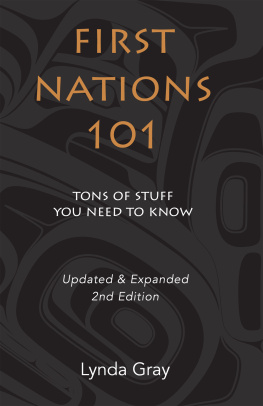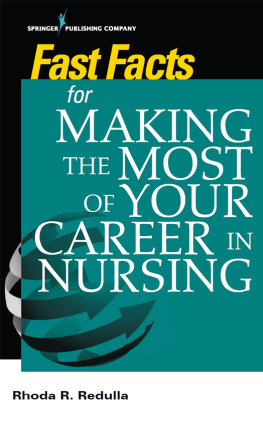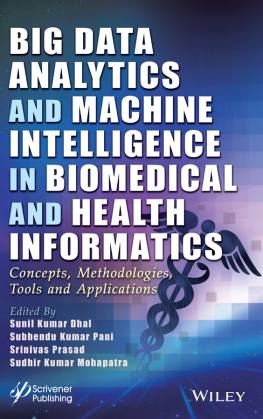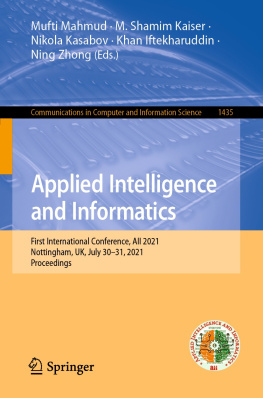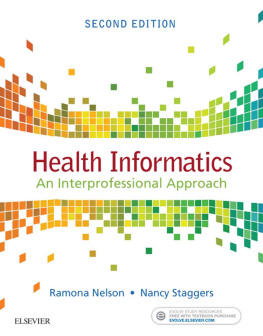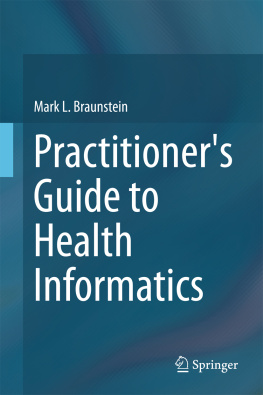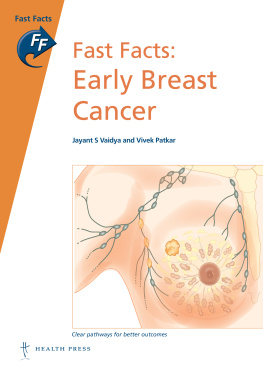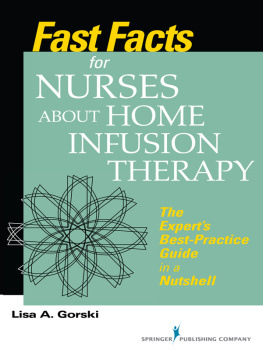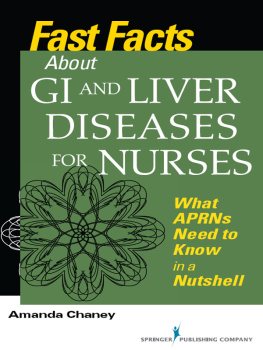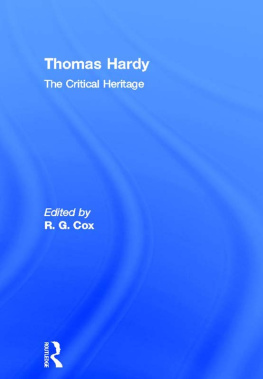Lynda R Hardy PhD RN FAAN - Fast Facts in Health Informatics for Nurses
Here you can read online Lynda R Hardy PhD RN FAAN - Fast Facts in Health Informatics for Nurses full text of the book (entire story) in english for free. Download pdf and epub, get meaning, cover and reviews about this ebook. year: 2019, publisher: Springer Publishing Company, Inc., genre: Home and family. Description of the work, (preface) as well as reviews are available. Best literature library LitArk.com created for fans of good reading and offers a wide selection of genres:
Romance novel
Science fiction
Adventure
Detective
Science
History
Home and family
Prose
Art
Politics
Computer
Non-fiction
Religion
Business
Children
Humor
Choose a favorite category and find really read worthwhile books. Enjoy immersion in the world of imagination, feel the emotions of the characters or learn something new for yourself, make an fascinating discovery.
- Book:Fast Facts in Health Informatics for Nurses
- Author:
- Publisher:Springer Publishing Company, Inc.
- Genre:
- Year:2019
- Rating:5 / 5
- Favourites:Add to favourites
- Your mark:
- 100
- 1
- 2
- 3
- 4
- 5
Fast Facts in Health Informatics for Nurses: summary, description and annotation
We offer to read an annotation, description, summary or preface (depends on what the author of the book "Fast Facts in Health Informatics for Nurses" wrote himself). If you haven't found the necessary information about the book — write in the comments, we will try to find it.
Fast Facts in Health Informatics for Nurses — read online for free the complete book (whole text) full work
Below is the text of the book, divided by pages. System saving the place of the last page read, allows you to conveniently read the book "Fast Facts in Health Informatics for Nurses" online for free, without having to search again every time where you left off. Put a bookmark, and you can go to the page where you finished reading at any time.
Font size:
Interval:
Bookmark:
1
Informatics and Why It Matters
Health informatics provides a communication link between patient data and information and healthcare providers to assure that the right information is provided to the right person at the right time to make the right healthcare decisions. This chapter introduced the rationale and importance of educating all levels of nursing about the use of data in decision-making. Using data as a road map for patient care provides the right information to the right person at the right time. The chapter provides the definition of health informatics. It focuses on how informatics helps increase patient care quality and safety while reducing patient care costs. The chapter discusses the interface of health informatics and the electronic health records (EHRs). It also describes how informatics addresses the Quadruple Aim.
communication, decision-making, electronic health records, health informatics, healthcare providers, nursing, patient care costs, patient care quality, patient data, Quadruple Aim
Communication, Decision Making, Electronic Health Records, Health Care Costs, Health Personnel, Medical Informatics, Nursing, Patient Generated Health Data, Quality of Health Care
Health informatics provides a communication link between patient data and information and healthcare providers to assure that the right information is provided to the right person at the right time to make the right healthcare decisions.
In this chapter you will learn:
The definition of health informatics
How informatics helps increase patient care quality and safety while reducing patient care costs
The interface of health informatics and the electronic health records (EHRs)
How informatics addresses the Quadruple Aim
Key Health Informatics Terms
Data, Informatics, Quality, Communication, Health Information Technology for Economic and Clinical Health (HITECH), Information Technology (IT)
Consider this!
Mike T. is a 54-year-old Ohio native with a 9-year history of chronic sarcoidosis and recent open-heart surgery. After several years of self-managing his disease, Mike and his wife Pam decided to move to Arizona, hoping the warm climate would relieve his sarcoidosis symptoms. Two months after the move, Mike was admitted to an Arizona ED for chest pain.
Upon arrival, Mike was extremely short of breath (SOB), diaphoretic, and having severe chest pain. Obtaining his complex medical history was difficult due to his symptoms, and exacerbated because Pam was out of town and unreached by ED staff. Mike was able to provide only allergy-related and Ohio hospital information to his nurse, Sara, before he became unresponsive and was intubated.
Sara soon discovered the hospitals were not on the same EHR system; therefore, the electronic transfer of medical records could not be done. The interventional cardiologist arrived at Mikes bedside, demanding Mikes cardiac history, stating, We only have a few minutes to get him to cath lab. I can see the scar from open-heart surgery, but what did he have done? I wont go in there blind!
What will happen with Mike?
Would his care be different if records were obtained immediately?
INTRODUCTION
The sentinel 2001 publication by the Institute of Medicine (IOM), Crossing the Quality Chasm: A New Health System for the 21st Century, addressed issues in healthcare quality, cost, and burden. The report discussed concerns related to overuse and duplication of unnecessary procedures, underuse of procedures deemed to be beneficial, and medical errors resulting in unsafe practices. The report cited six specific aims to improve healthcare, targeting safe, effective, patient-centered approaches to timely, efficient, and equitable care. The IOM published a series of reports addressing healthcare needs, providing a road map to improved patient outcomes. Fundamental points for healthcare improvement were the need to radically change the healthcare system, including increasing patient safety by reducing error, increasing communication efficiency through the quality of a learning health system, transforming the nursing environment to create a better workflow, containing healthcare costs, and facilitating these improvements through information technology. Making this happen would require an educational reset, creating competencies (, Informatics Frameworks and Competencies: What a Nurse Needs to Know) related to training necessary to move into the digital age and incorporate information technology into bettering patient outcomes.
So what is information technology? Information technology is a systems approach to storing, retrieving, and distributing information using computers. Health information technology (HIT) uses a computerized or EHR, electronic medical record, and public health record (, The Electronic Health Record, Electronic Medical Record, and Personal Health Record). We suggest that informatics is the science and study of information technology and processes, but health informatics is the science and study of HIT and processes to improve patient care.
INFORMATICS AND THE EHR
Electronic communication is a widely accepted form of person-to-person or person-to-group interaction. The world has become a smaller planet due to the usability and speed of global communication devices, including computers and smartphones, wearables, email, and social media platforms. According to the American Health Information Management Association (), health informatics is the scientific discipline that is concerned with the cognitive, information-processing, and communication tasks of healthcare practice, education, and research, including the information science and technology to support these tasks (p. 60). Health informatics can move the American healthcare system toward quality care by enhancing communication between practitioners and patientsincreasing the patientprovider dyad by increasing the humancomputer interaction. The merging or melding interdisciplinary communications will decrease the healthcare silos and increase a team approach to collaboration to increase patient outcomes. Go team!
Fast Fact Bytes
Meaningful use is:
Using a certified EHR in a way that helps patients and providers, such as e-prescribing
Ensuring that certified EHRs facilitate electronic health information exchange to improve care ()
From a healthcare practice perspective, the initiation of EHRs, electronic medication administration records (EMARs), and computerized provider order entry (CPOE) changed the way many nurses and other healthcare providers practice. Laws, such as the Health Information Technology for Economic and Clinical Health (HITECH) Act (a part of the American Recovery and Reinvestment Act of 2009), were put into place to encourage EHR implementation and use of these systems in meaningful ways (). The ability for interdisciplinary communication explodes with the use of HIT, making it easier to comprehensively reconcile medications and e-prescribe medications quickly, saving time and money while increasing productivitynot to mention decreasing burden and healthcare costs! The CPOE has made the difficult and dangerous task of interpreting physicians orders a thing of the past.
INFORMATICS AND EDUCATION
Nursing education took steps to incorporate the use of data and information into their curriculums and tying the EHR to patient care. Educators, in the era of the Internet, are moving education to a digital environment not only to assist in spreading the concept of digital learning but also to reach many healthcare providers at all levels of learning. The emphasis on the need to maximize the use of data and information for better patient outcomes is creating greater interest in interdisciplinary conversations surrounding patient care (). Consider the
Next pageFont size:
Interval:
Bookmark:
Similar books «Fast Facts in Health Informatics for Nurses»
Look at similar books to Fast Facts in Health Informatics for Nurses. We have selected literature similar in name and meaning in the hope of providing readers with more options to find new, interesting, not yet read works.
Discussion, reviews of the book Fast Facts in Health Informatics for Nurses and just readers' own opinions. Leave your comments, write what you think about the work, its meaning or the main characters. Specify what exactly you liked and what you didn't like, and why you think so.


